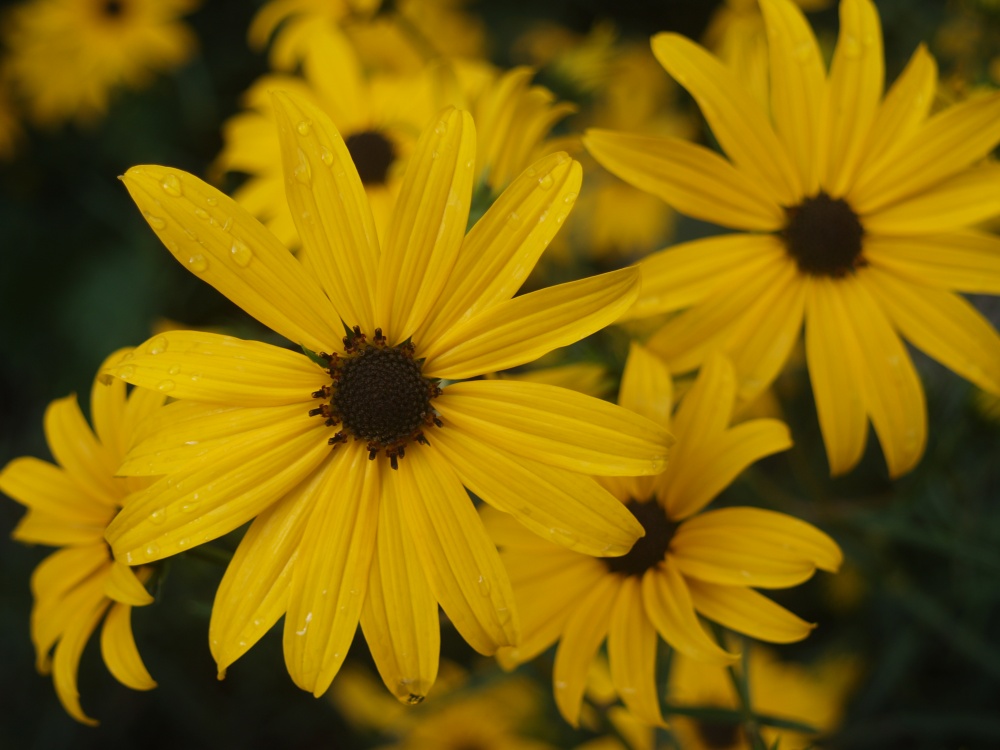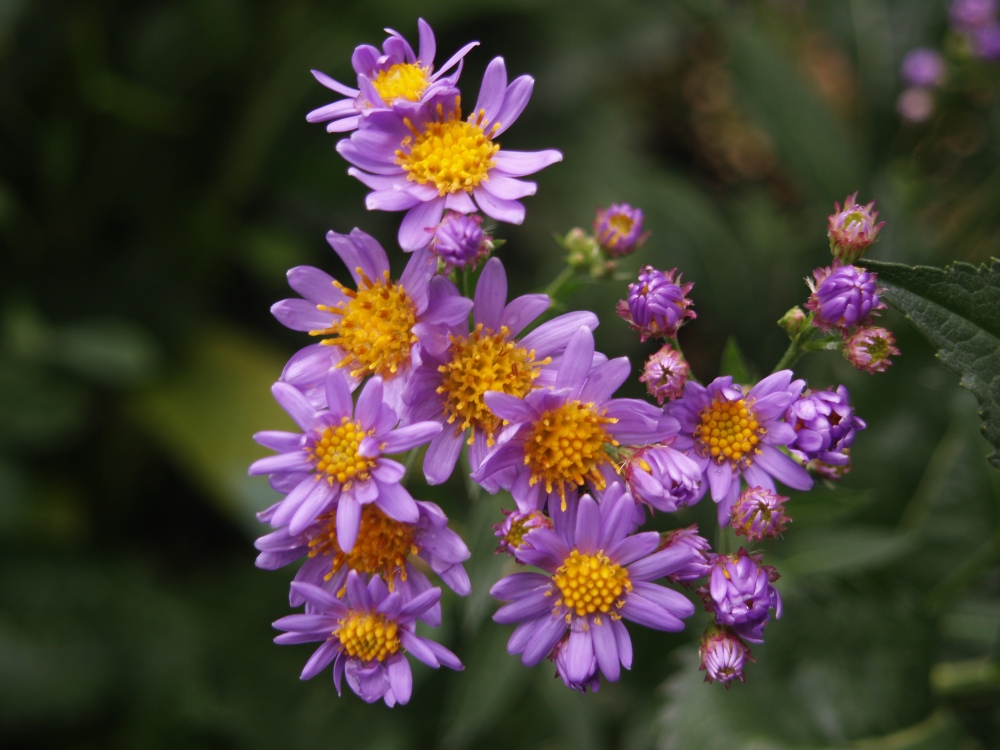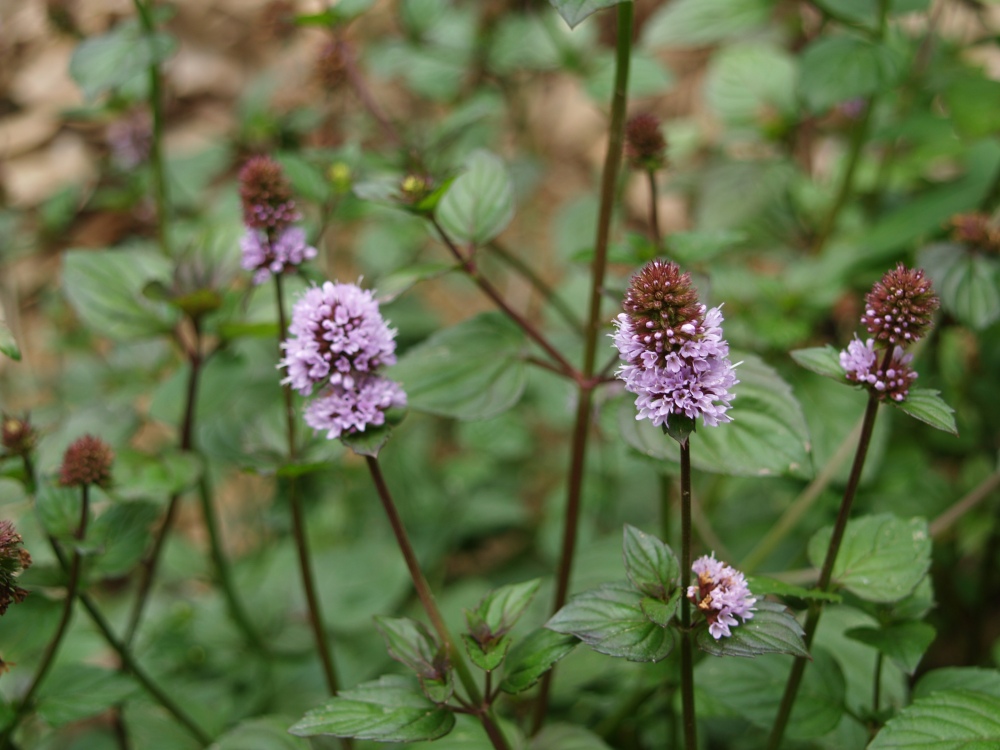Today is cold, not an early October chill, but November cold, still in the forties at midday! The sky is gray and scattered raindrops are carried on blustery winds. The gardener is tempted to believe that the season is past, but a brief stroll reveals many blooms, some just beginning.
Large pots of tropicals are scattered through the garden, and with the cold I’ve monitored the weather forecast to see if today I’ll be forced to lug them indoors for the winter. I’m not feeling particularly motivated this afternoon, so a low of forty is deemed to be safe, and warmer days are predicted in the week ahead. With luck it will be late in the month before the big bananas, elephant ears, and gingers are brought in to clutter the house.
In the week of hundred degree July heat the tall stems of the perennial sunflower (Helianthus, above) lost their rigidity, and now they are bent, sprawling in every direction. Sunflowers will usually tolerate heat with ease, but a lack of ground moisture contributed so that the stems are contorted and the flowers are now at knee height rather than at the shoulder. Though blooming a bit late after six weeks of rain and clouds, the flowers are bright and welcoming, and are perhaps a hopeful sign that winter is not just around the corner. 
The tall stems of Tatarian daisy (Aster tataricus “Jindai’, above) remain stiffly upright, towering over neighbors, with the tallest nearly to six feet. The small, yellow-centered, blue flowers attract bees and butterflies in the early autumn though only one lone bumblebee braved today’s cold.
A year ago the path to the daisy was easily accessed, but the closeby edgeworthia has decided to fill the space and is now nearly ten feet across (though only four feet tall). I’ll have to watch next year so that the daisies aren’t swallowed whole. The edgeworthia will need to be pruned, or a more permanent solution will be to transplant the daisies where they have more space.
Every week in the garden seems to require judgments that arise from unforeseen actions in prior years, some a matter of a lack of thought, but others because plants often are more vigorous than planned. Too many times I’ve put off the task of moving a threatened plant, and the daisies are lost forever, but I enjoy the late season blooms so I’ll make note to check on them when they break ground in May. Here, I can hear you admonishing me to write it down, write it down, but I don’t keep a calendar, so I must depend on what little is left of my memory. 
Along the northwestern property line I dug a shallow channel years ago to carry surface drainage into a wet weather pond that I constructed. Through much of the year the swale is damp, and occasionally storm waters will uproot the small plants that I’ve tried to establish along the edges. In late spring I threw in the towel, gave in and decided that the only answer for this problem area was to plant an invasive such as Chameleon plant (Houttuynia cordata, which covers another troubled area) or chocolate mint (Mentha piperita , above).
In theory, the mint will be confined by large shrubs and an evergreen magnolia that grow above the low swale, but it will not be too surprising if I’m in for a fight in a few years, Thus far the mint has rooted, and it has withstood recent deluges without being washed away, but I’ll see soon enough if the reality matches my theory. In any case, on a cold and dreary October afternoon the blooms are a pleasant sight.
Dave…speaking of bringing the potted plants inside, would appreciate your advice for treating them so that we don’t import colonies of ants and other critters. Looks like we may have a few weeks before the first near-freeze, so I’d like to kill any critters that may be hanging on leaves or buried in the soil. Wife does NOT like to battle ants inside during the winter, and I know that we’ve brought some inside in the past. Thanks.
I’m afraid that I’m not the person to ask. Every year I bring in ants, spiders, and last year a toad. I’ve probably brought snakes in too. This is preventable with a bit of foresight, which I am sadly lacking in.
I see recommendations to flush pots with pesticides and to spray foliage with insecticidal soap, but ants and most other critters are in the soil, and a thorough flushing with water will drive most of them out. It can be difficult to saturate the soil of pots since much of the water goes down the sides of the pot and out the drain holes, so the best way is to submerge, or at least partially submerge the pot, and then water.
If I planned a day or two ahead this is how I’d do it, but of course, I never have, choosing instead to wait until the last minute when a freeze is called for.